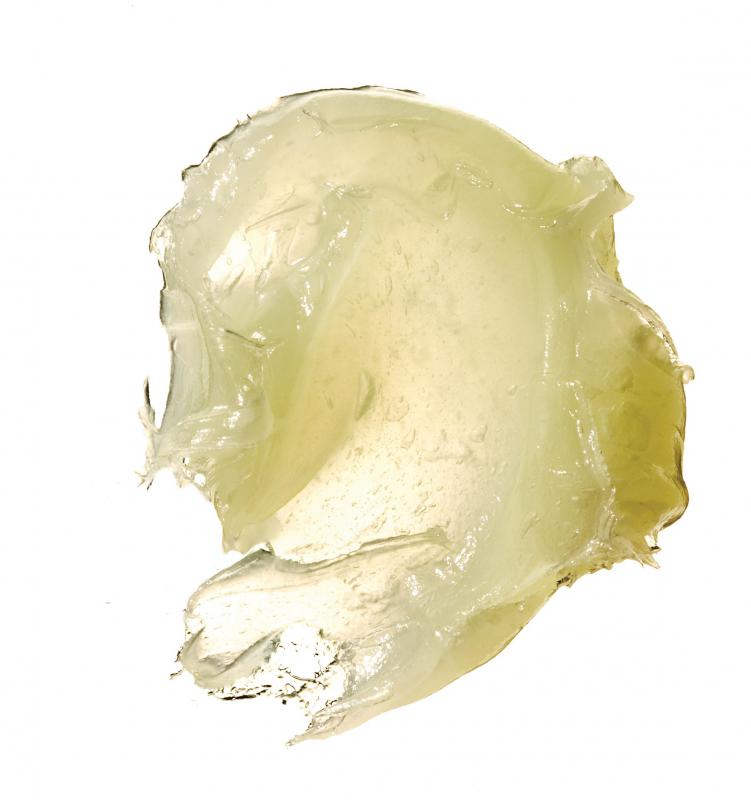At HomeQuestionsAnswered, we're committed to delivering accurate, trustworthy information. Our expert-authored content is rigorously fact-checked and sourced from credible authorities. Discover how we uphold the highest standards in providing you with reliable knowledge.
What is Plaster Gauze?
Plaster gauze is a type of gauze wrapping that is typically used in creating masks, body casts, and similar items that require the flexibility of gauze and the hardness of plaster. It consists of a length of gauze that is coiled into a roll and when dry has the texture and flexibility of gauze. The gauze is made with dried plaster powder infused into the gauze itself, so this type of gauze is usually white and may have a slightly powdery feel to it. When plaster gauze is dipped in water, however, the plaster is activated and the gauze can then be set onto anything and will quickly harden.
Sometimes called art gauze or sculpting gauze, plaster gauze is commonly used for a number of different crafts and artistic purposes. The gauze is fairly safe to use, though it should not be eaten or chewed, as saliva can activate the plaster. It can, however, be used by children under adult supervision. Plaster gauze can usually be found in arts and crafts stores, and comes in rolls of varying lengths and widths.

A great deal of the popularity of plaster gauze comes from how simple it is to use and the excellent results that even first-time users can enjoy. When dry, the gauze feels much like any other type of gauze that might be used as a bandage or part of a costume or decoration. The gauze can be measured out and cut into strips of any length.
These strips of plaster gauze can then be soaked in water for a moment to activate the plaster within the gauze. It is typically recommended that after soaking, the gauze be allowed to rest for about 30 seconds to drain off excess water and ensure full activation of the plaster. Water being used will usually take on a slightly milky appearance due to the plaster; plaster gauze should be used outside or in an area lined with paper or plastic to prevent damage to flooring from dripping plaster.
The wet plaster gauze can then be applied to any surface or object and will harden fairly quickly in a dry environment. When used on a person’s face, for a mask, care should be taken to avoid contact with the eyes or insides of the nose and mouth. It can also be helpful to cover skin in petroleum jelly or a similar substance before applying the gauze, to ensure it can be removed more easily once hardened.
AS FEATURED ON:
AS FEATURED ON:











Discussion Comments
Does anyone have a recommendation for a plaster gauze that is easy to smooth out? I've made a pot out of it and have sanded it a lot and it's still pretty rough and textured. Or do you have a recommendation for a substance with which to cover it that will smooth it out?
I had a blast making mummy masks with my kids using plaster bandages. We covered their faces with plastic wrap and then used the plaster gauze strips to make a mold of their face.
These gauze strips were applied to their face and a piece of poster board that was the background for the mask. It only took about 10 minutes for the strips to dry so they didn't get too wiggly during that time.
The next day after the masks were completely dry, they painted them with gold paint and decorated them to look like Egyptian mummies. You could do this with almost any theme you wanted.
They loved being involved in the whole process and having their own mask to wear around the house. It was also a good history lesson on the country of Egypt and mummies.
There are a lot of fun craft projects that you can do with plaster gauze and it is simple enough that even young kids can be involved.
If you like working on different art projects, plaster gauze can be really fun to work with. It is pretty inexpensive and there is no end to the creative projects you can do with it.
I like to order the rolls that are already pre-shrunk. The best ones are those that already have plaster of paris in them. All I do is cut the size of strips I want and dip them in warm water.
After the strips are dry, you are ready for the fun, creative part. They can be sanded, painted and sealed depending on what you are doing.
These strips are so easy to work with and I always try to make sure I have a roll of plaster gauze in my craft supplies.
I have always been kind of a crafty person but have never been able to stick with one kind of craft. I bounce around between styles and methods and materials all the time. Each phase lasts for a year or two, sometimes less, sometimes more.
During one of these phases I got really into mask making and taking casts of peoples faces. I ended up making masks of almost all of my good friends and family. I took a cast of their face using plaster gauze, and then I painted the cast to look just like them.
I liked the project for two reasons. When someone wore their own mask it was a really weird effect where they had this painted face on top of a real body. But I also ended up with little sculptural reminders of all of my friends. I still have most of the masks and they are kind of like snapshots of people I know.
Post your comments